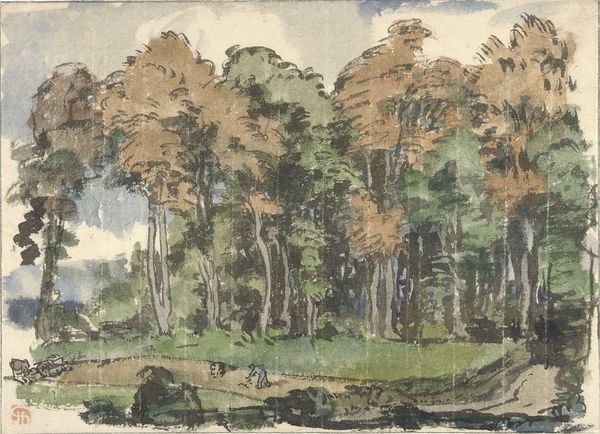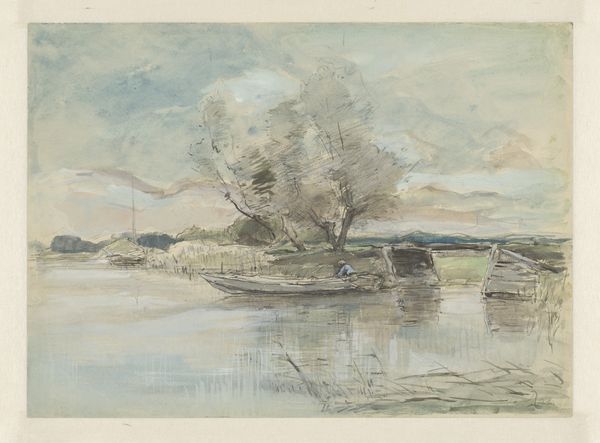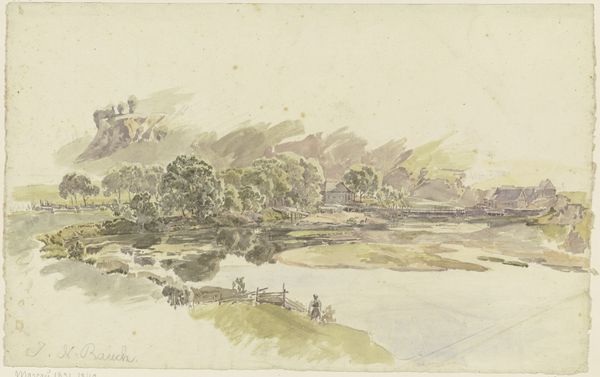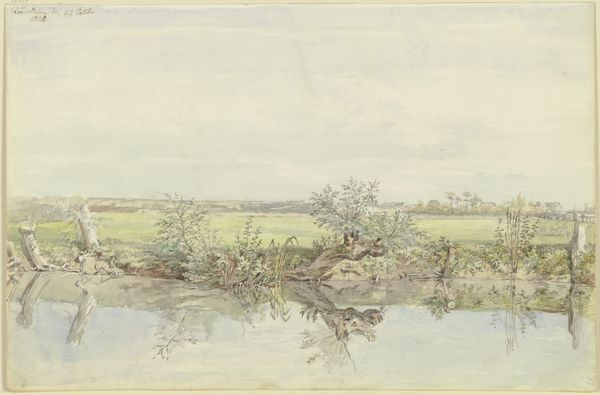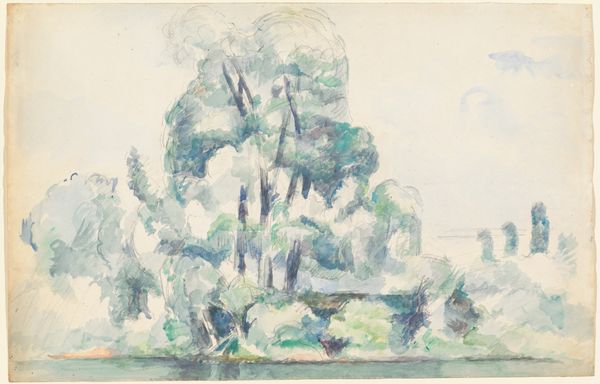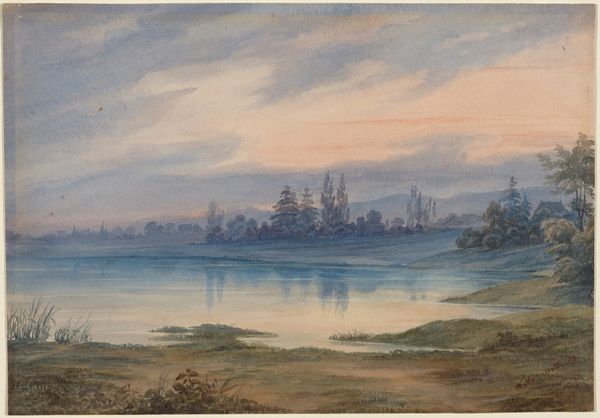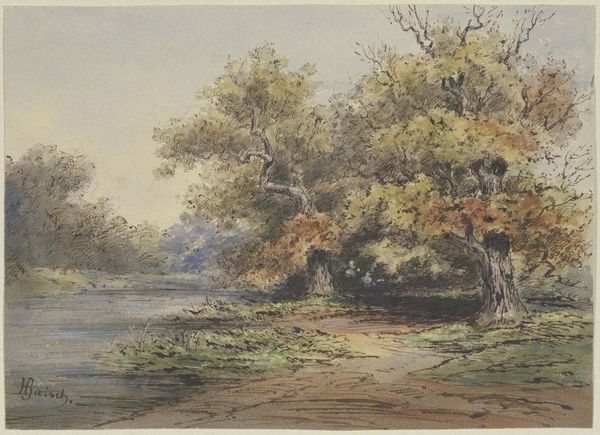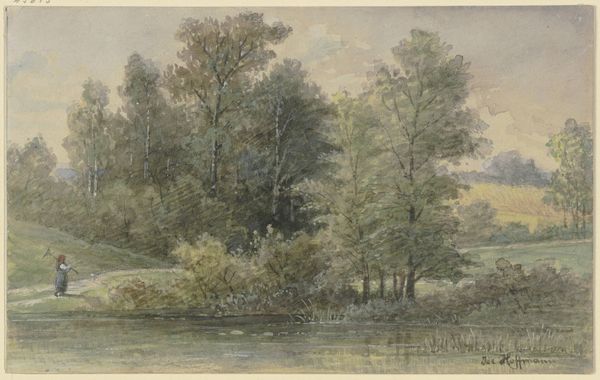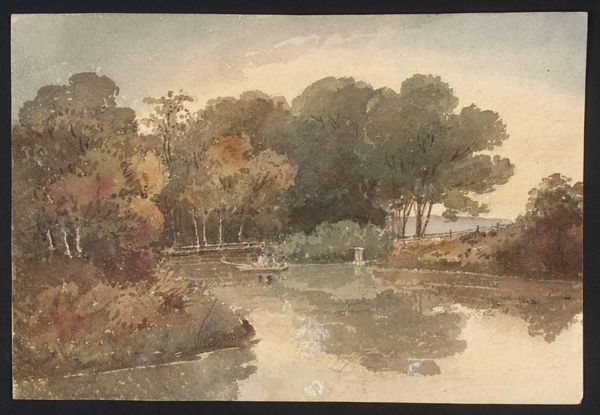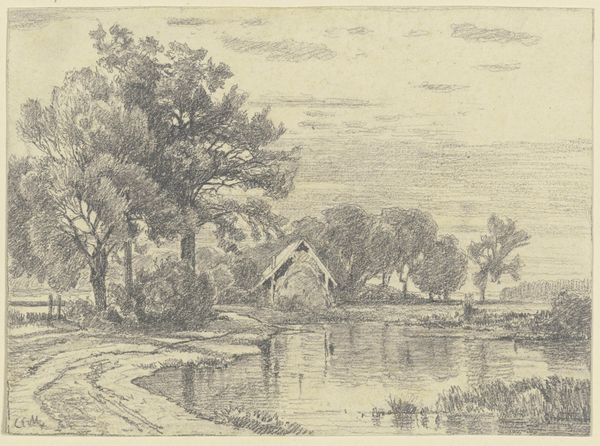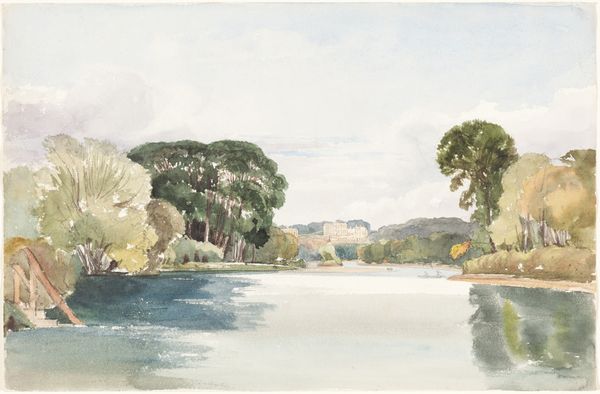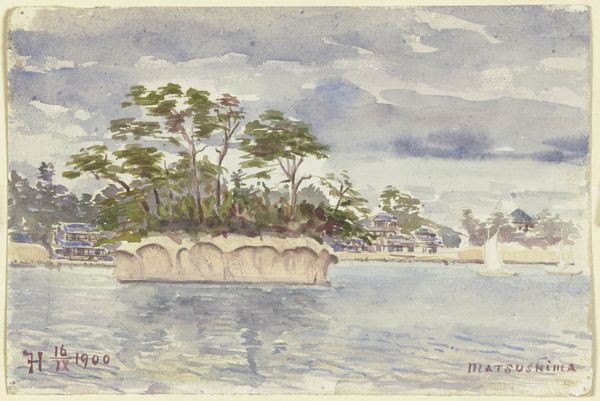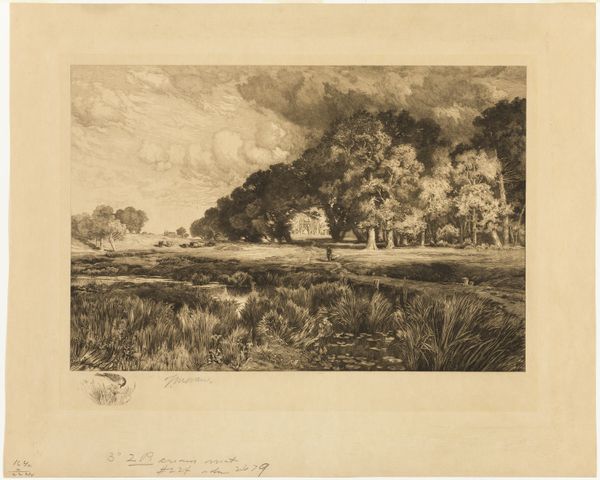
Copyright: Public Domain
Editor: Here we have Fritz Hauck’s “Baumschlag am Wasser, Jacksonville” from 1904. It’s a watercolor piece, and the way the water reflects the trees creates such a serene and tranquil atmosphere. What formal qualities strike you most in this work? Curator: The most compelling aspect of this work resides in the interplay between representation and abstraction. Observe how Hauck utilizes geometric forms within the broader landscape, achieved through contrasting color planes and patterns. Editor: The geometric forms seem to be coming directly from the reflection in the water and contrasting with the organic shapes. Curator: Precisely. Consider the use of light – not as a mere descriptive element, but as a structuring principle. Note how Hauck’s brushstrokes create subtle textures. This is intensified when compared to areas of flattened color. Editor: So, it’s not just about depicting a scene but about how the elements like light, shape and texture interact? Curator: Correct. It's about the artist exploring the formal language of painting, using landscape as a vehicle. Consider also how he flattens the image – rejecting a strict perspectival depth. It calls our attention to the surface of the painting itself. Editor: I see now, the interplay of textures and the subversion of traditional perspective really pushes you to consider the painting as an object, not just a window. I hadn’t looked at it that way. Thanks for helping me perceive these subtle structural and theoretical levels. Curator: It is through the decoding of these pictorial codes that we begin to truly comprehend the nature of the aesthetic experience itself. It's a continuous process.
Comments
No comments
Be the first to comment and join the conversation on the ultimate creative platform.
